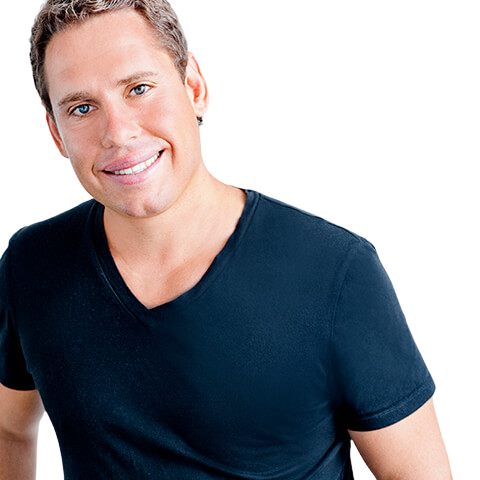
Your Future Events Presents...... Live it Now - The Rapid Change Movement
The two day in person intensive that will change your life!
Breakdown or Breakthrough?
Most people wait for something to break down in their life; a relationship ending, a career disappointment or dead-end job, enormous stress around finances, an emotional meltdown, a feeling of lost identity or lack of purpose.
Don’t wait for a crisis to make a change, it’s the decisions you make Now that determine your future. Now.
"Don’t wait for a crisis to make a change, it’s the decisions you make Now that determine your future"
- Matt Catling
Norths Cammeray
12 Abbott St, Cammeray NSW 2062
3rd & 4th June 2023
Tickets Still Available!
Who is this event for?

Sabrina Houssami
Featured on the Australian Apprentice, formerly Miss World 2006, Miss World Asia 2007
“I’ve been pleasantly surprised by the amount of courage, perseverance and insight I have learned to display in all my business and personal dealings. Matt is one of those rare things – a coach who guides and prompts with such subtlety and skill that one cannot help but be persuaded, motivated and inspired. You will see progress where there was none before.”
Are you on a true target or false target in life?
So many people are experiencing Groundhog Day! The merry-go-round of chasing after things that never bring you joy, knowing that they are not on a true target and they are heading towards a crisis long term.
Most people set up false targets early in life, completely by accident. A big house, a fancy car, a designer suit. Underneath these false targets sit real ones that are truthful and simple. A place for your family to be together, the luxury to go on holidays whenever you want, personal significance people pay attention to. The house, car, suit alone won’t get you there, you need to focus a little deeper.
When you’re chasing false targets you find you feel dissatisfied, burned out and frustrated, and you usually have no idea why.
But when you find your true targets, clarity follows. Who you really are, what you want, how to get your goals achieved all becomes simple, things start to flow effortlessly.
From here, breaking through a crisis is highly motivating and pleasurable. Instead of the pain, repression and avoidance, you experienced with a breakdown, now you set your sights on climbing higher and achieving incredible results no matter what comes your way.
At Live it Now, we say a crisis is an opportunity to find your truth and we believe in embracing the opportunity to breakthrough.
Live it Now is a two-day program to give you the tools to tap into that potential, to get on a true target with a long term plan to create your future and Live it Now.
Train yourself to identify your true targets to make new decisions and create a fulfilling life.
So What Is Live It Now?
Day 1 – Preparation Day
Day 2 – Transformation Day
"Unfortunately, most people live their entire life without ever discovering their best version of self"
- Matt Catling
The Story Behind 'Live It Now'
A Fathers Last Message To His Son In 1994, on a Sunday, on Father’s Day, running along the beautiful Manly beach, Matt Catling’s father suddenly passed away.
Matt’s father was his hero, introducing him to Neuro Linguistic Programming training when he was just 12 years old. Two weeks before Matt’s father passed away, he said something to Matt that transformed his life, and has transformed tens of thousands of lives since that day. He said “Matt, the secret to life is to Live It Now.”
This moment inspired Matt to create the Live It Now event, which has saved hundreds of lives, transformed the lives of thousands more, and has raised thousands of dollars of vital funding for several charities.
The Live It Now event is two days of the worlds most advanced information in psychology, coaching, and business. It is an event that will transform your life.
The Results Of This Training Are Mind Blowing
People that have been directionless or unfocussed transform and become driven high achievers. High achievers discover a bigger game.
The worst procrastinators discover why they don’t follow through. Others find the drive and passion they needed for their life.
Our vision is to transform the world one person at a time.

Tamara
Award winning newsreader and writer for Womens Health & Fitness Magazine
“I have increased my confidence and decided to quit my full time job and pursue my passion. I have now increased my income within only two weeks of finishing the course. On top of this I have had a life long battle with binge eating and was able to cure this within minutes with an intervention with Matt. Thank you.”
"We tap into our true potential when you are tested, this where you discover who you really are"
- Matt Catling

Matt Catling
Creator of Rapid Change Technologies (RCT)
Introducing Matt Catling…
A gifted trainer, educator and entrepreneur, Matt has spent close to half his life running businesses and has been heavily involved in the personal development and consulting industry.
At 27 Matt helped grow one of the biggest coaching and consulting companies in Australia, expanding it nationally and increasing sales into the millions.
Matt has now worked with 1000's of people nationwide and is the creator of the revolutionary RCT (Rapid Change Technologies) some experts are calling the new approach to high-performance psychology for this new accelerated world.
Matt also has a passion for contribution and making a difference, having helped raise money for the Make a Wish Foundation, Bear Cottage, and currently runs his acclaimed Live it Now training monthly for the local community.